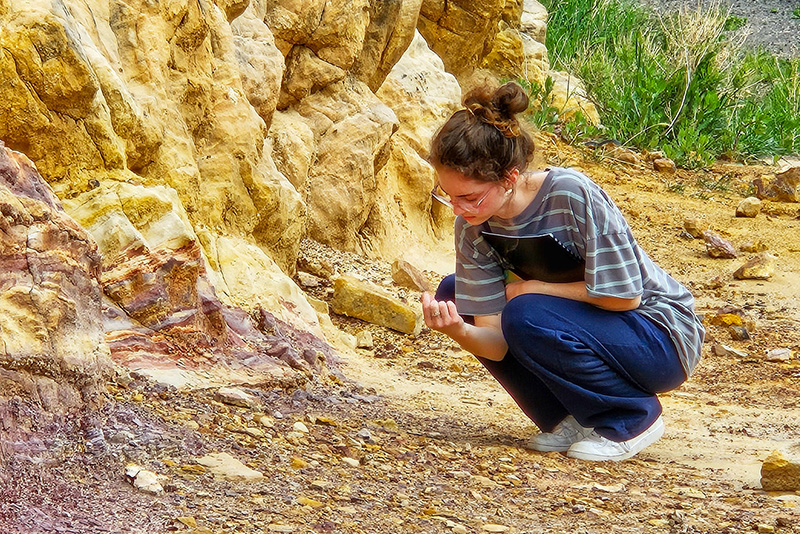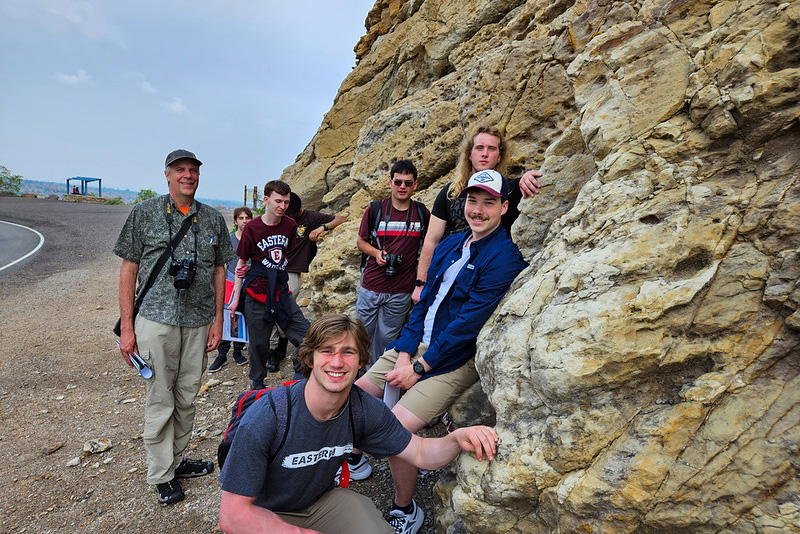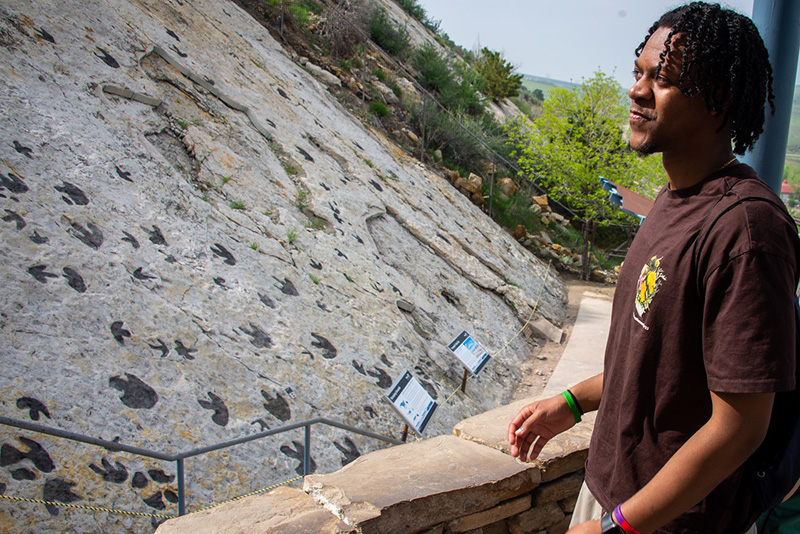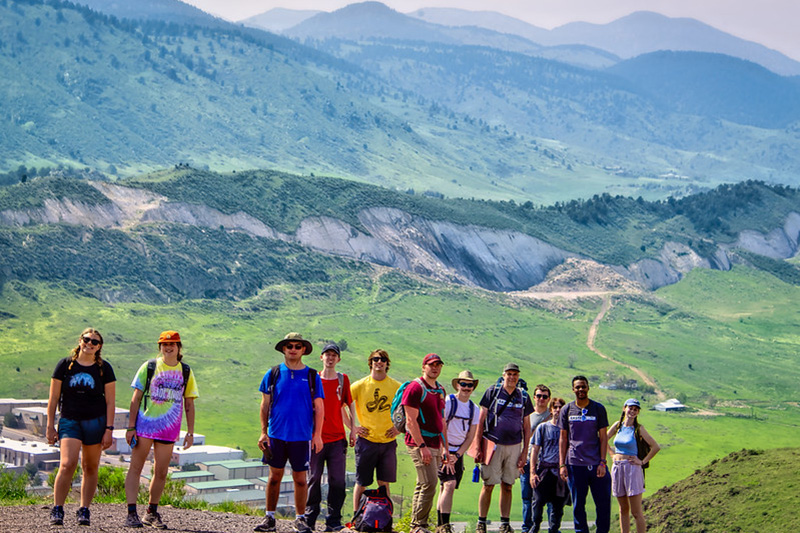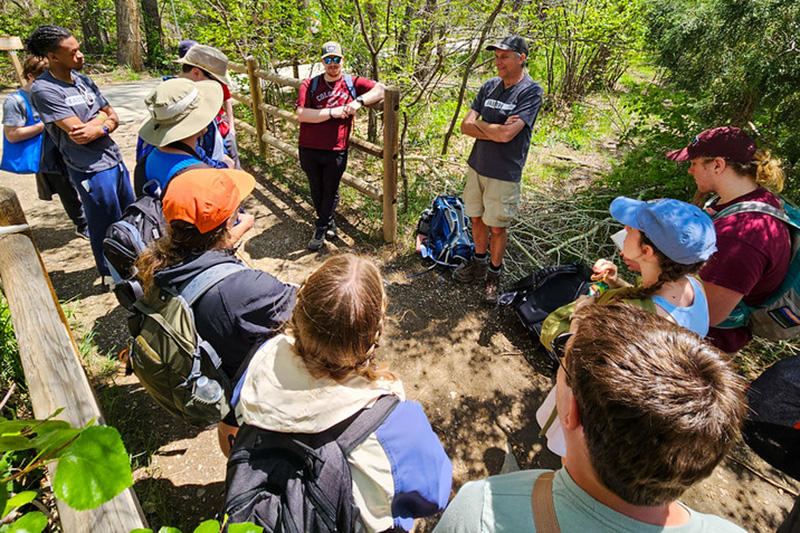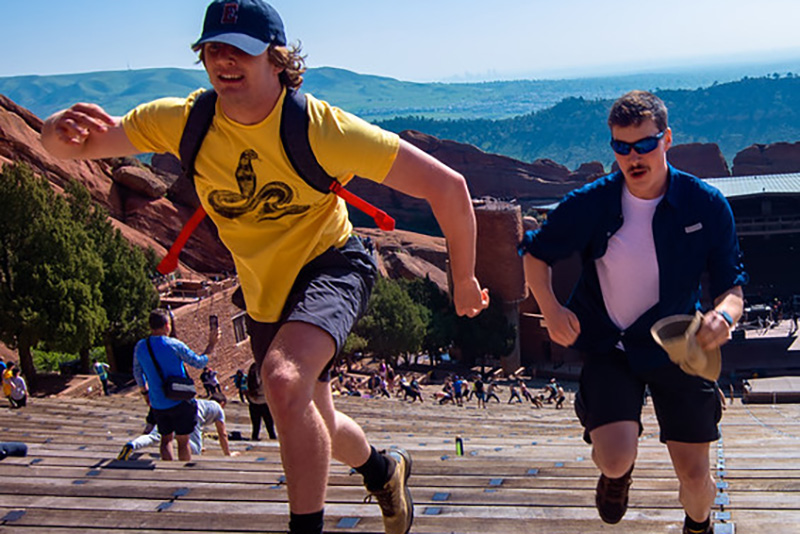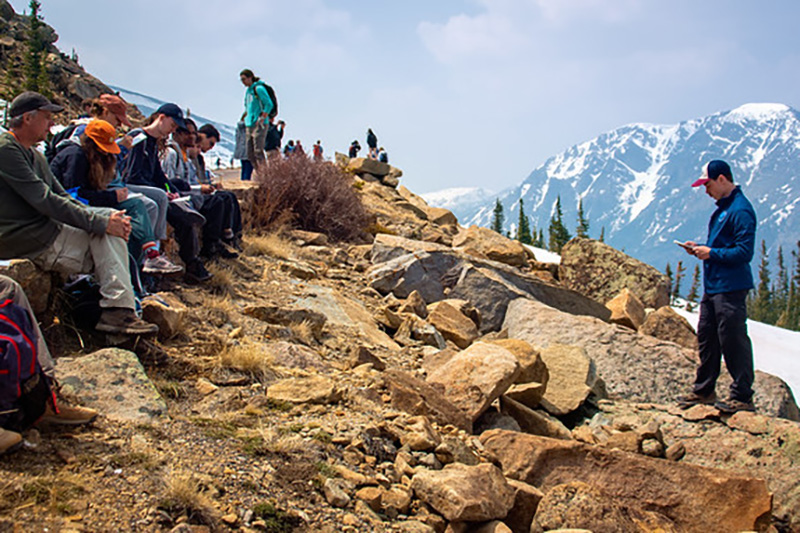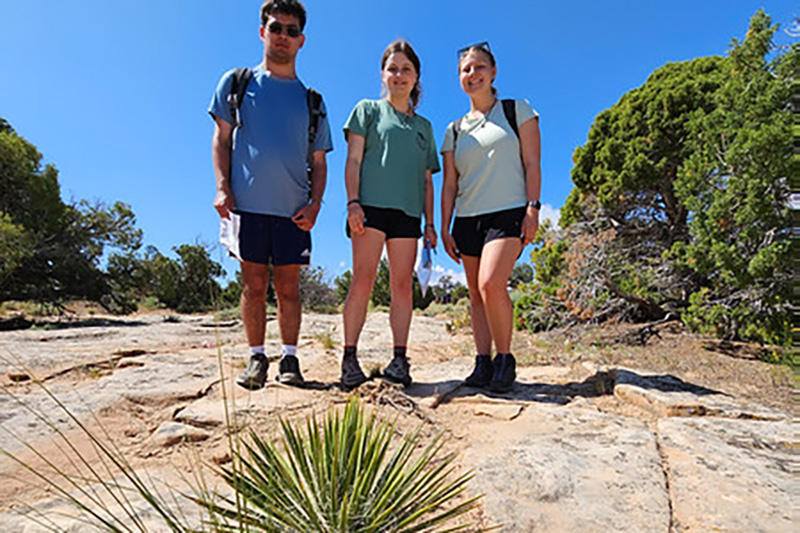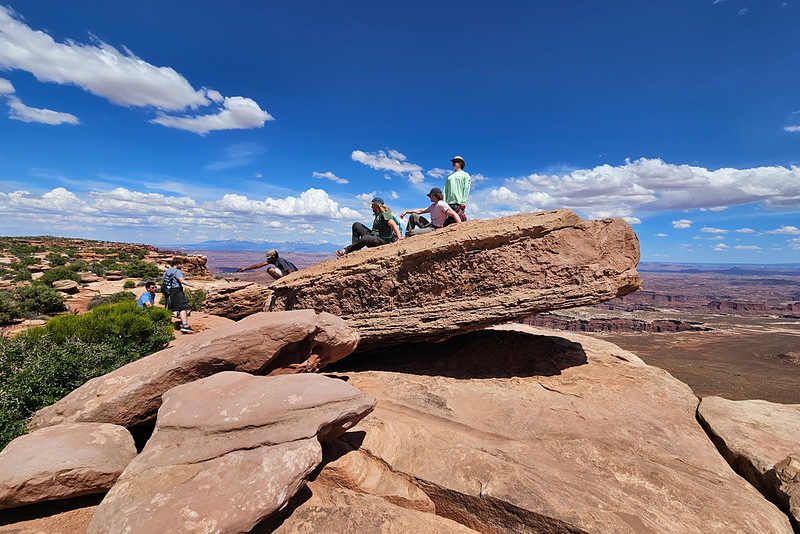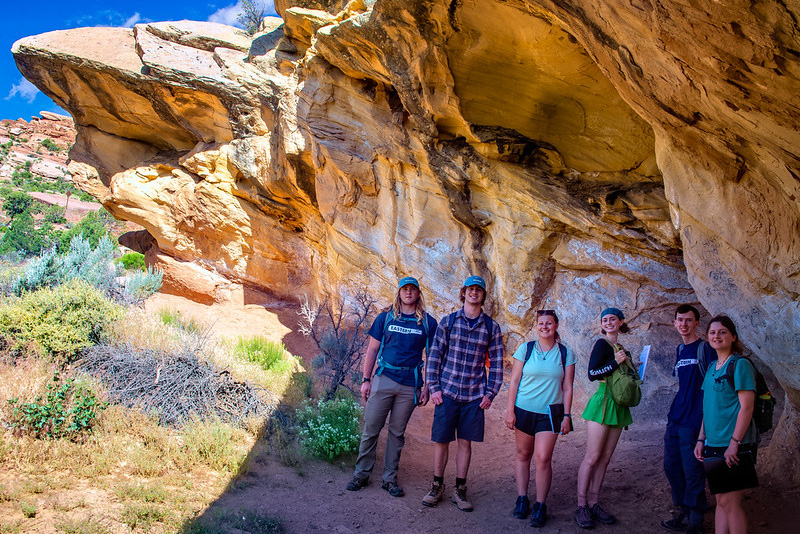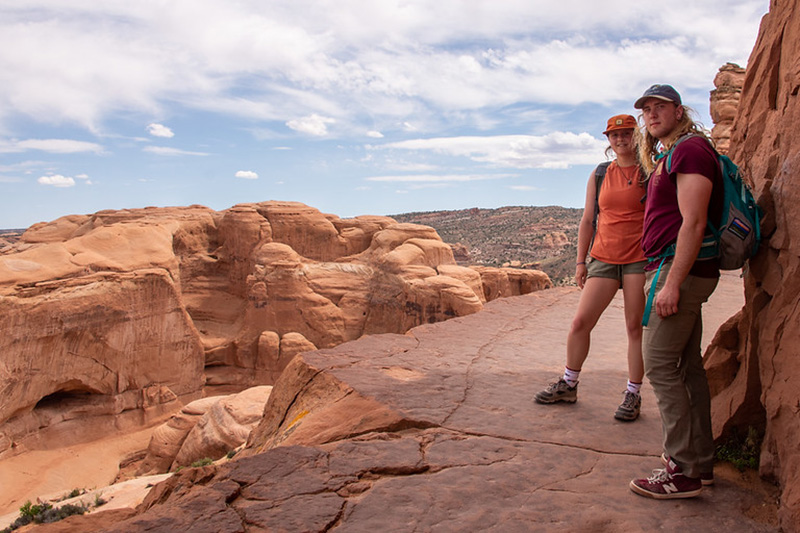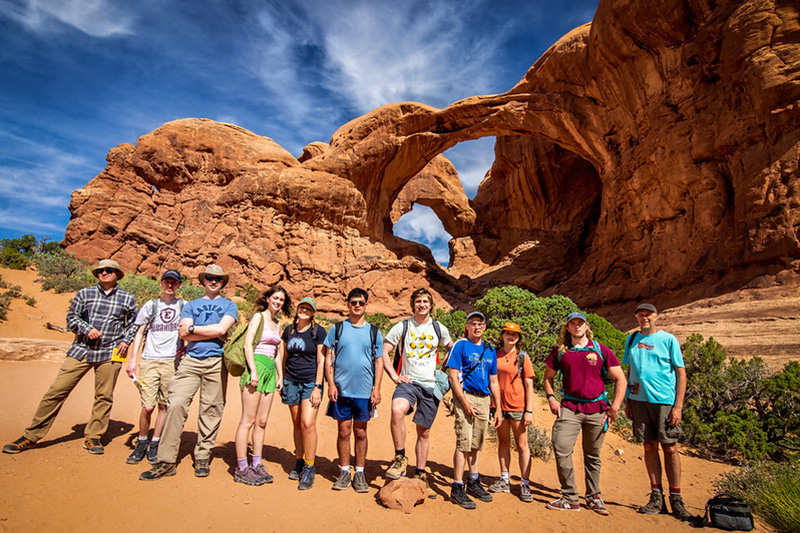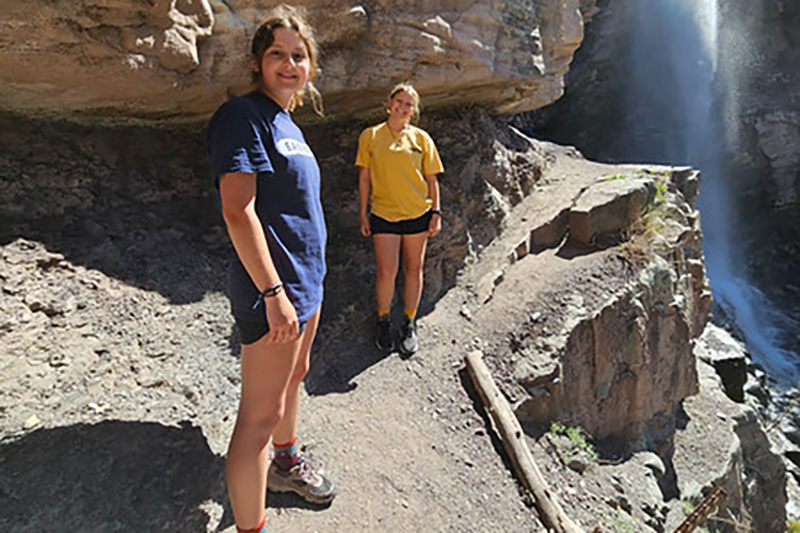- Apply
- Visit
- Request Info
- Give
Students head West to a ‘natural laboratory’ for geologists
Written by Lucinda Weiss
Published on June 20, 2023
Eleven Eastern Connecticut State University students and two faculty members in the Department of Environmental Earth Science (EES) explored the geology and landscapes of western Colorado and southeastern Utah on a 12-day field trip in May.
The students “learned a tremendous amount of geology in a manner that will stick with them for their lifetime,” said the faculty who led the trip, Professors Peter Drzewiecki and Drew Hyatt. “The field is a natural laboratory for geology, and much more can be witnessed in places where vegetation covers less of the landscape than in New England,” said Professor Drzewiecki.
Besides geology, the students, all EES majors or minors, studied paleontology, the history of settlement and mining in the area and Native American petroglyphs. They observed wildlife not seen in New England, including pronghorns, bighorn sheep, wild horses and a variety of birds. Their trip took them to seven national parks and monuments.
“One of my favorite parts of the trip was seeing new wildlife, plants and landforms,” said sophomore Annalise Kennedy. “I had never seen elk, lizards or wild horses before this trip and found our encounters with them magical and thrilling. As far as plants go, I really loved seeing so many species of cacti and observing the different colored flowers associated with each,” she said. “I was amazed at the diversity in geological structures we saw, whether it was the sandstone arches at Arches National Park or the cirque glaciers of Rocky Mountain National Park.”
One of the best dinosaur track sites in the country was among their first stops, at Dinosaur Ridge outside Morrison, CO, where they also studied red rock formations. They went farther west to Rocky Mountain National Park, where they learned about the Laramide Orogeny, the mountain-building event that formed the Rockies. They saw the “Great Unconformity,” where two rock layers on top of each other, one 1.7 billion years old and another only 280 million years old, share a surface that represents about 1.4 billion years of missing Earth history.
They visited the Colorado Plateau and the Dinosaur Hill paleontology site where a huge Apatosaurus skeleton was excavated in 1901, and they examined rock layers deposited in the Western Interior Seaway, an ocean that flooded North America during the age of the dinosaurs. They viewed the deep canyons formed by the Colorado and Green Rivers over six million years and Upheaval Dome in Canyonlands National Park in Utah, a circular region thought to be a meteor impact crater.
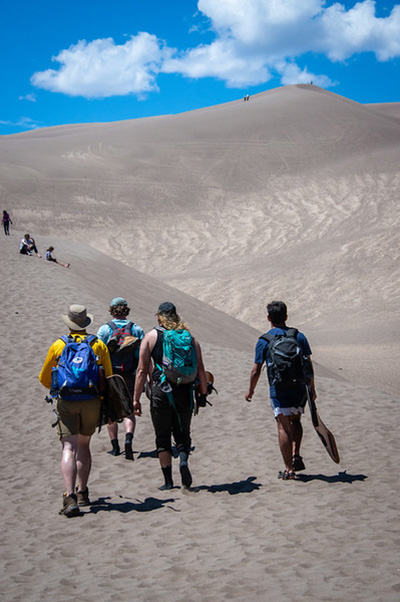
The group learned how rock arches formed in Arches National Park in Utah and visited the volcanic-origin San Juan Mountains of southwestern Colorado. They hiked to the Yankee Girl Mine in Ironton, CO, last operated in the late 1800s, and explored the geology around Ouray, CO. At Great Sand Dunes National Park in Colorado they learned about wind-driven sand dune formation. On their last day, they visited the Florissant Fossil Beds National Monument in Colorado to study fossils of insects, fish, flowers and giant redwoods that were part of a warmer, wetter climate 40 million years ago.
“Being out there with our professors and being able to ask questions and have them explain what we were seeing was really helpful,” said junior Emma Bean. “I had never been to the Arches and Canyonlands National Parks before. Learning about how the arches formed and the roles of salt and tectonics was really interesting. We could see the arches in different stages of formation as well.”
The group ended its trip by driving to the top of Pikes Peak, at 14,115 feet the highest elevation anyone on the trip had ever been, noted Professor Drzewiecki.
“I learned a lot about that environment, past environments and geology out in the Colorado/Utah area,” said sophomore James Bragg-Phillips. “The landscapes were amazing and sometimes completely new to me,” he said.



